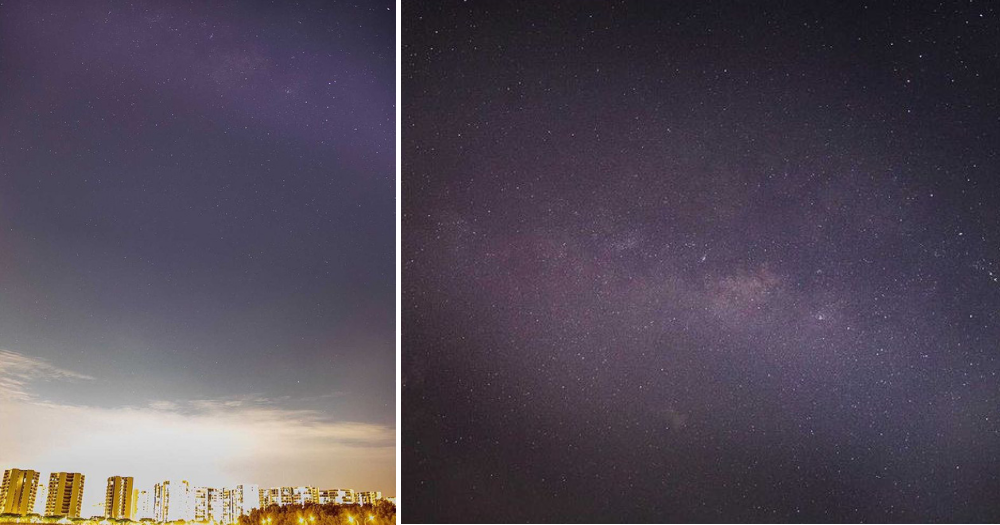By peering up at the heavens, one Singaporean photographer managed to capture a particularly captivating shot of the Milky Way above residential estates in Tampines.
Astrophotography piqued his interest
Caleb Sim is an 18-year-old freelance photographer. He told Mothership that he first started snapping shots of cars, also known as automotive photography, four years ago.
He has since dabbled in photographing various subjects, such as people, products and those for advertisements.
Around three years ago, he discovered astrophotography, and subsequently turned his camera upwards to photograph the night sky, astronomical objects and celestial events.
Sim said that he feels "astronomically amazed" at being able to capture the stars and galaxies with his camera. He added that he thinks astrophotography is a more "unique" hobby which not many people have an interest in.
On June 28, Sim managed to snap some gorgeously clear shots of the Milky Way above Tampines, where he lives.
 Photo courtesy of Caleb Sim
Photo courtesy of Caleb Sim
Took him a year
He shares that these shots were a year in the making.
Finding the right time to photograph the Milky Way was extremely challenging, Sim said, as the weather in Singapore at night is rather unpredictable.
The Milky Way can also only be photographed when the sky is completely cloudless.
 Photo courtesy of Caleb Sim
Photo courtesy of Caleb Sim
To check for ideal conditions, Sim will take a peek out of his house's window at the weather conditions.
If all looks good, he will head to an open field nearby and set up his camera.
For those interested in capturing such shots, Sim shared some information about his camera settings as well:
- Set your camera up on a tripod to ensure your camera does not shake.
- Use a wide angle lens with a wide aperture.
- Abide by the "500 rule".
- Increase your ISO to 3200.
- Snap away!
Sim's camera is a Canon 6D MKii.
Here are more photos Sim has taken of the night sky so far.
 Photo courtesy of Caleb Sim
Photo courtesy of Caleb Sim
 Photo courtesy of Caleb Sim
Photo courtesy of Caleb Sim
 Photo courtesy of Caleb Sim
Photo courtesy of Caleb Sim
Majestic.
For the uninitiated, the Milky Way is a galaxy of which the Sun, stars, Earth and all other planets we know of belong to.
A galaxy is a large group of stars, gas, and dust bound together by gravity. Galaxies come in different shapes and sizes, and the Milky Way for instance, is shaped like a spiral.
The Milky Way is so named for the milky band of light it appears as when seen in a dark area.
Related stories
Top photo courtesy of Caleb Sim
If you like what you read, follow us on Facebook, Instagram, Twitter and Telegram to get the latest updates.

